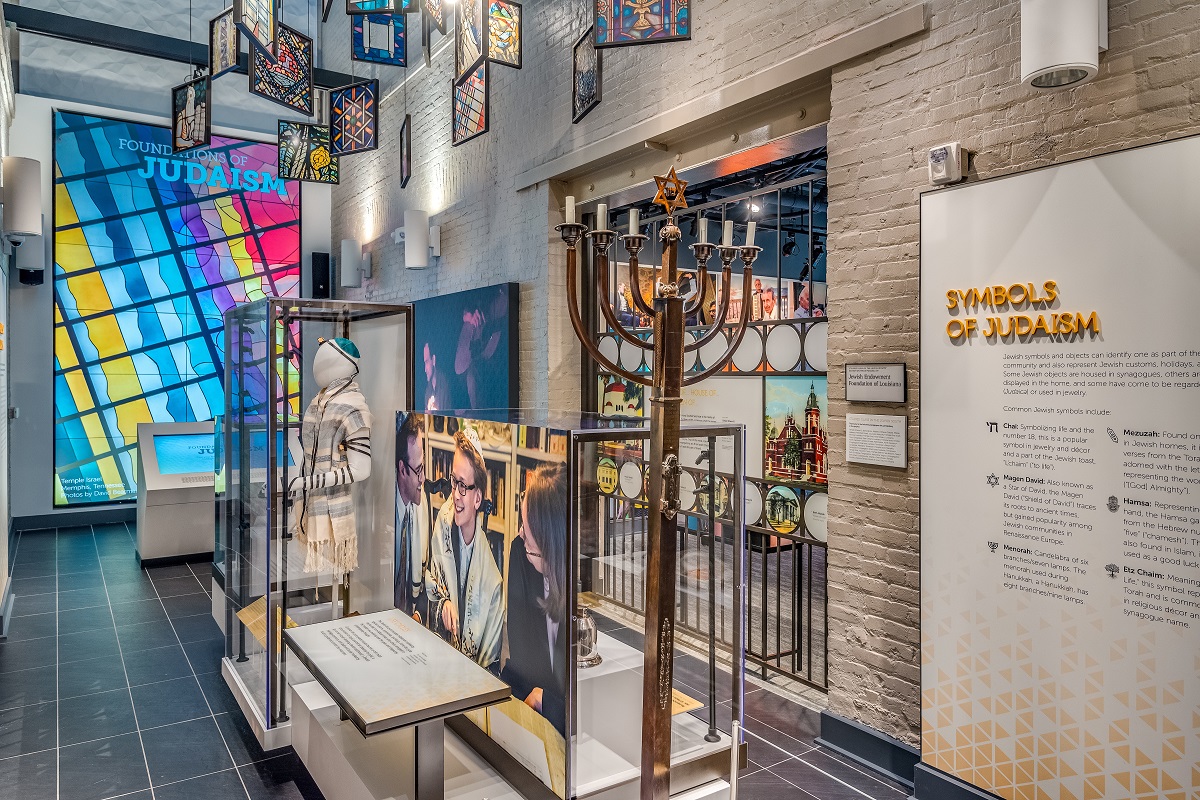Museum Exhibition of the Year
The permanent exhibition at the new Museum of the Southern Jewish Experience
Published: February 28, 2022
Last Updated: June 9, 2023

Museum of the Southern Jewish Experience
MSJE has already hosted thousands of visitors. The museum got its start nearly two decades ago in Utica, Mississippi, at the Henry S. Jacobs Camp. The summer camp is part of a regional network dedicated to enriching spirituality and fostering relationships among southern Jewish youth. When rural southern Jewish communities started disappearing, the camp became an artifact repository. A small museum was opened in 1986. Yet its remote location meant that campers were its primary beneficiaries. After closing in 2012 and briefly operating as the Institute of Southern Jewish Life, MSJE reopened in New Orleans in a bigger building and with a much broader mission.
MSJE distinguishes itself from other museums of its kind by focusing on the entirety of southern Jewish history. Displayed in three galleries across eight thousand square feet, selections from the museum’s four-thousand-object collection, oral histories, and interactive displays relay how Jewish communities experienced historic events over some three hundred years across thirteen southern states, including Louisiana. To determine what themes and objects to display, MSJE established an advisory committee of over thirty historians, writers, and researchers who provided guidance and content. The result is a compelling display that encourages dialogue.
The exhibition begins with the arrival of Jewish families in the South during the colonial period. They struggled to fit in yet preserve the traditions of their faith while navigating racial injustice, slavery, and later the Civil War. In the late 1800s, the peddling of wares led to the establishment of mercantile businesses in the 1900s. These Jewish communities gradually adopted unique folkways and foodways as they assimilated into southern culture. Modern Jewish life is explored against the rise of Zionism, World War II, and the horrors of the Holocaust. During the Civil Rrights Movement, southern Jews made a substantial contribution towards the struggle for equality. In the middle of the exhibition is a gallery devoted to the foundations of Judaism. The diversity of Jewish beliefs and practices is explored through a selection of sacred texts, images, symbols, and words. An art installation composed of fifty stained glass panels, each a replica of an actual window, reinforces the importance of the synagogue in Jewish daily life.
Encapsulating MSJE’s mission is their motto: “Shalom: Make Yourself at Home.” This phrase sets the tone, according to Kenneth Hoffman, MSJE’s director, who described the museum as a welcoming, personable space where everyone is encouraged to join the conversation. The MSJE website invites visitors, whether Jewish or not, to share their stories and add them to the ongoing narrative. This open invitation reminds us that we are all part of the same story and underscores the museum’s central message of understanding and appreciation for identity, diversity, and acceptance.
Elizabeth Chubbuck Weinstein is an independent museum curator, writer, and creative nonprofit consultant based in Baton Rouge.
